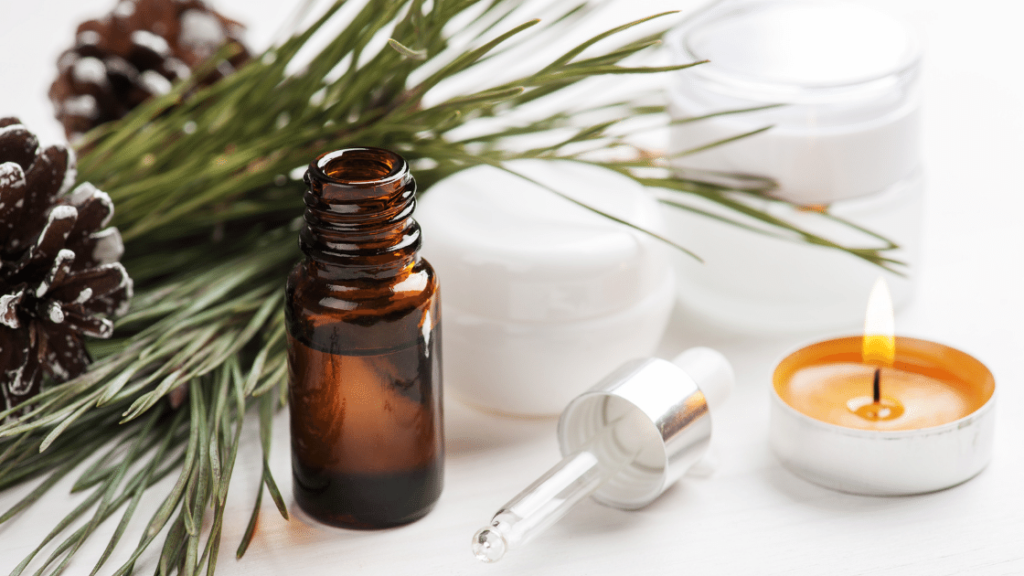Peppermint: A Festively Curative Herb

Winter is coming! And we all know what that means in regards to festive flavors! Bring on the coffees and chocolates that taste like gingerbread, eggnog, white chocolate, and peppermint!
As delicious as they (and Christmas treats in general) may be, they’re packed with sugars and offer little to no nutritional value. Ok, there are vitamins and protein in the milk, and caffeine might prevent dementia, but there are also about ten teaspoons of sugar in your average holiday treat.
But did you know that one of those merry flavors, when unaccompanied by added sugars, can boost your health? Not the gingerbread; not the eggnog; and especially not the white chocolate because it isn’t even chocolate! I’m talking about the hybrid mint known as the peppermint. This flavorful cross between a watermint and spearmint is more than just a wintery herb. It promotes wellness!
The Benefits of Peppermint
Boosts Energy and Alertness
The active ingredient menthyl acetate, which causes the potent flavor and scent, stimulates the hippocampus. This complex brain structure plays a major role in alertness, memory, learning, and emotional response. So peppermint does a good deal of talking to your brain when it’s inhaled or ingested!
Aids Digestion
It communicates with other parts of your body too. Have you ever bought a box of peppermint tea? I’m guessing, as is the case when I buy a box, that the package reads “supports healthy digestion” somewhere in small letters. And why is this? Peppermint oil prevents smooth muscles from contracting. Smooth muscle, mainly found in the intestines and stomach, changes shape to facilitate bodily functions. This is why peppermint is a common go-to for upset stomachs.
Relieves Pain
Have you ever tried Biofreeze? Most of my clients swear by it for pain relief. I mix it with my massage oils if a patient requests it. Biofreeze gel has a very strong menthol smell, on behalf of its (surprise!) menthol content. Menthol, another active compound in peppermint, is a counterirritant. When applied directly, it simultaneously cools and warms the body; a sensation that soothes muscle and joint pain. If you don’t have Biofreeze, you can combine a few drops of peppermint oil to your massage lotion/cream/oil instead. Please note: If you have peppermint on your hands, DO NOT touch your eyes! There are few things more painful, and I admittedly speak from experience.
Unclogs Sinuses
Menthol comes to the rescue again! Try using an oil diffuser to treat sinus problems, as inhaling the herb does the trick best. Menthol vapors stimulate mucus receptors in the nose, which promotes the clearing of the airways and reduction of mucus. A minty lozenge can help too!
Now You Know What Peppermint Does!
So go get yourself a piece of peppermint dark chocolate and an unsweetened peppermint latte! Steep some peppermint tea! Put peppermint oil in the diffuser! Place peppermint leaves on a salad, if that’s something you like to do!
Katrina Jenkins
Author, Licensed Massage Therapist
Katrina Jenkins graduated from Towson University in 2013 with a Bachelor’s Degree in Health Science and worked as a nurse’s aide briefly before pursuing her true passion. She graduated from the Massage Therapy Institute of Colorado in April 2016 with honors and completed the Touch of Healers Scholarship Program the following summer. She has been a part of the Moyer Total Wellness Team since the summer of 2017.
Resources:
Dhikav, Vikas, and KuljeetSingh Anand. “Hippocampus in Health and Disease: An Overview.” Annals of Indian Academy of Neurology, vol. 15, no. 4, 2012, p. 239, www.ncbi.nlm.nih.gov/pmc/articles/PMC3548359/, 10.4103/0972-2327.104323.
“Drugs & Medications.” Www.Webmd.com, www.webmd.com/drugs/2/drug-163041/biofreeze-menthol-topical/details.
Eskelinen, Marjo H, and Miia Kivipelto. “Caffeine as a Protective Factor in Dementia and Alzheimer’s Disease.” Journal of Alzheimer’s Disease : JAD, vol. 20 Suppl 1, 2010, pp. S167-74, www.ncbi.nlm.nih.gov/pubmed/20182054, 10.3233/JAD-2010-1404.
Sanders, Kenton M, et al. “Regulation of Gastrointestinal Motility–Insights from Smooth Muscle Biology.” Nature Reviews. Gastroenterology & Hepatology, vol. 9, no. 11, 2012, pp. 633–45, www.ncbi.nlm.nih.gov/pubmed/22965426, 10.1038/nrgastro.2012.168.
Photo Credit:
Canva by IrinaBort
